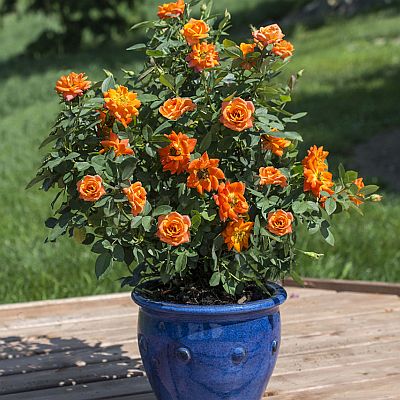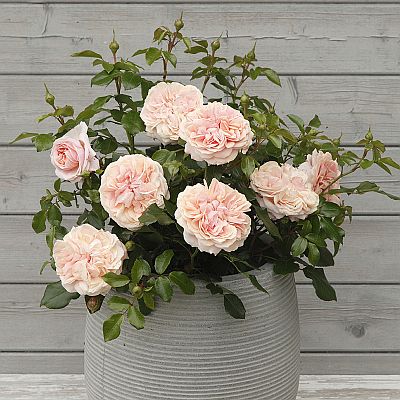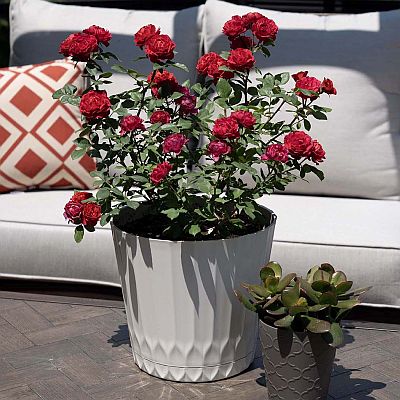


So I just wrote an entire post about protecting your roses that are planted in the ground (you can find it HERE) and I realized I neglected to address one of the most challenging parts of winter protection, roses in containers. For the most part, roses do quite well in containers and add a reliable burst of color to patios, decks and accents each year. Much of my winter protection advice is similar to when your roses are in the ground, but there are a few additional things you should keep in mind.
Success with growing roses in containers begins with planning. Choose your roses wisely. Just like when you pick zone appropriate roses for your garden, you need to do the same for your above grade plants. I always suggest selecting roses that are at least one USDA zone hardier than your normal growing zone. I make this recommendation for a very simple reason, soil is a great insulator and protects your rose’s roots. When plants are above grade that protection is diminished and can lead to greater freeze damage.
Likewise, choose your container wisely, Both the size and construction material of your container matters. Bigger pots, with a greater volume of soil, are naturally better insulators. However, they have the down side of added weight and lower mobility. We maintain most of our cut stock plants in 3 1/2 gallon (or larger) pots. That seems to be a good balance of insulation, water retention, and mobility. Consider using a pot that is made from a frost resistant material. Frost resistant pottery is made from clay that’s fired at a high temperature to make it less porous and more water resistant. While that treatment is primarily done for the health of the pot, it does have additional insulative qualities that protect your roses.
Mulch your roses in their pots. As with your roses in the ground, mulching the bottom 4″ to 6″ of the rose will help protect this most critical area of the plant. Not only is the mulch layer insulative, it helps regulate moisture retention. Monitor the soil moisture carefully throughout the winter. This is critical, you pots will dry out much quicker than your garden beds and roses that are frozen and moist survive at far greater rates that roses that are dry. Again, don’t go overboard, we’re not looking for “rose-cubes” but a frozen pot is a good insulator.
Depending on your situation, you may want to take that next step and add a little extra insulation. Again, since your container roses are lacking the natural insulation of the soil, additional measures are helpful. Burlap wrapping your pots, in addition to mulch, is an easy addition and helps with mitigating wind damage. Rose collars are similar and allow for more mulch to be added to the base of the plant. I’ve even had customers wrap pots in bubble wrap or flexible foam but don’t wrap your roses in a material that isn’t breathable. Every measure can help and it ultimately depends on what you can reasonably do each season.
My final piece of advice for over wintering container roses is to move them to a favorable location. What exactly does, that mean? Well, just about anything except indoors. Roses tend to better with a period of dormancy and the outdoors helps them do just that. Personally, I am a fan of moving containers to a sheltered corner of my porch. This area blocks the wind, prevents snow load, and I can still easily check on moisture levels through the winter. Many people I talk to like to put the roses in an unheated garage. That definitely works, but make sure the roses are still getting light and water. One of the more ingenious solutions I’ve heard about involved overwintering in a window well where you regain some of the natural insulation of the ground. Whatever you can do to limit exposure to the elements will help your container roses emerge happy and healthy in the spring.

Call Us
1-800-552-2082